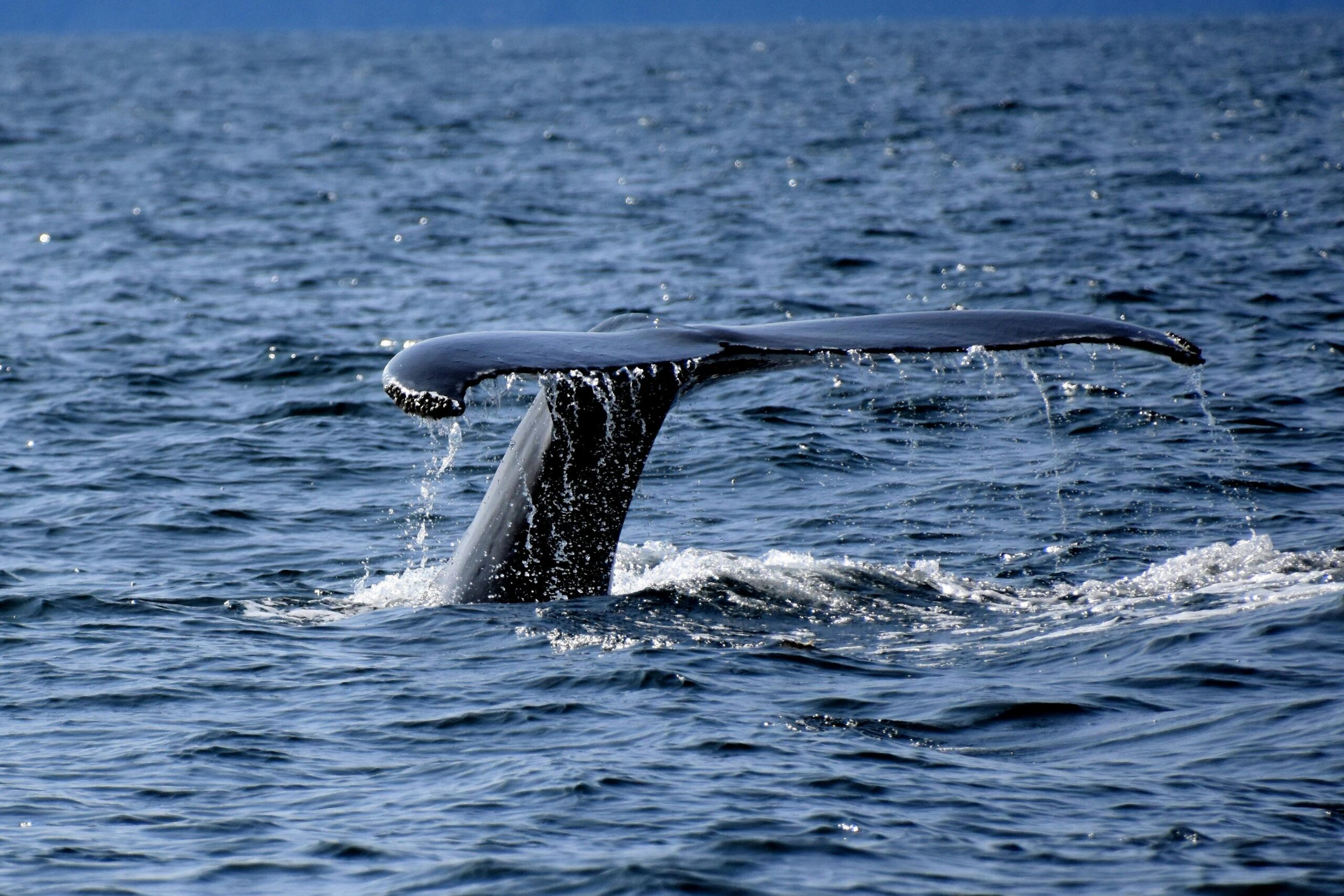Are you ready for an unforgettable adventure? Whale watching Perth is quickly becoming one of the most sought-after experiences for nature lovers and thrill seekers alike. Each year, thousands flock to the stunning coastline of Western Australia to witness the majestic migration of these gentle giants. But have you ever wondered what makes this spot so special for best whale watching tours in Perth? It’s not just the breathtaking scenery, but the rare opportunity to see humpback and southern right whales up close in their natural habitat. Imagine the thrill of spotting a massive whale breaching just metres from your boat – an experience that words can hardly describe. Whether you’re a seasoned wildlife enthusiast or a curious first-timer, Perth’s whale watching season offers something truly magical. Plus, with eco-friendly tours and expert guides, you’re guaranteed a safe and respectful encounter with these magnificent creatures. Don’t miss out on the chance to capture stunning photos and create memories that will last a lifetime. Looking for insider tips on the best time for whale watching in Perth or the top spots to catch a glimpse? Stay tuned as we dive deep into everything you need to know for an epic whale watching journey on Australia’s west coast!
Top 7 Whale Watching Spots Near Perth for an Unforgettable Marine Adventure
Whale watching Perth: an experience you won’t easily forget, or maybe you will, depends on how much you like whales I guess. Seriously though, if you’re in Western Australia and got a few hours to spare, jumping on a boat for whale watching Perth tours is something you should probably consider. Not really sure why this matters, but these gentle giants tend to be pretty shy, so patience is key (and a bit of luck, obviously).
Why people love whale watching in Perth is a bit of a mystery to some. Maybe it’s the thrill of spotting a massive creature flapping its tail just yards away from you, or maybe it’s just the fresh sea air messing with your head. Whatever it is, the best whale watching spots near Perth offer some cracking views, and the chance to see humpbacks, minkes, and occasionally even blue whales if you’re lucky. Yeah, blue whales! Not everyday you get to say you saw one of those, right?
When to go whale watching in Perth
Here’s a quick cheat sheet for when you should be booking your trip if you want to catch the whales at their best. Spoiler: it’s mostly in the cooler months, so pack a jumper, even if the sun is shining.
| Month | Whale Watching Chances | Notes |
|---|---|---|
| May to August | High | Peak season, whales migrating south |
| September | Medium | Whales heading back north |
| October | Low | Whales mostly gone, but still possible |
You might wonder why it’s always the same months. Well, whales have this habit of migrating to warmer waters to breed and give birth, so they pass by Perth twice a year. It’s like they’re doing a long commute, only with flippers instead of cars.
What should you expect?
If you’re imagining giant whales breaching right next to your boat like in the movies, you might be in for a slight disappointment. They do jump and splash, but not all the time. Sometimes they just swim languidly, which is actually quite mesmerizing if you ask me. Maybe it’s just me, but watching whales move slowly through the water feels oddly relaxing, like nature’s own slow TV.
Here’s a quick list of what you should bring for your day out on the water:
- Waterproof jacket (because weather in Perth can be unpredictable)
- Binoculars (unless you want to squint all day)
- Camera with zoom lens (or just use your phone, but don’t expect perfect shots)
- Sunscreen (don’t forget, even on cloudy days)
- Snacks and water (boats don’t always have food onboard)
- Sea sickness tablets (if you’re prone to drama on the waves)
Types of whales you might see on a whale watching Perth trip
| Whale Species | Description | Likely to see? |
|---|---|---|
| Humpback Whale | Known for spectacular breaches and songs | Very common |
| Southern Right Whale | Big, slow, and sometimes come close to shore | Occasional sightings |
| Blue Whale | The biggest animal on earth, rarely seen but wow | Rare, but possible |
| Minke Whale | Smaller, quick, and curious of boats | Often seen |
The humpbacks are usually the stars of the show, with their acrobatic leaps and curious nature. Southern rights tend to be more low-key, just cruising along. Blue whales? Well, you might be better off buying a lottery ticket than spotting one, but hey, dreams do come true sometimes.
Booking your whale watching experience in Perth
There’s plenty of options out there, from big commercial tours to smaller, more personal boats. Prices can vary quite a bit, so it’s worth shopping around. Not really sure why it’s so expensive sometimes, but I guess you’re paying for the boat, crew, and the chance to see a whale, which is priceless, right? Or at least it should be.
| Tour Operator | Price Range (AUD) | Duration | Extras |
|---|---|---|---|
| Perth Whale Safaris | 90-150 | 3-4 hours | Eco-certified, expert guides |
| Oceanic Adventures | 75-130 | 2.5-3 hours | Onboard commentary, snacks |
| Bluewater Marine | 100-160 | 4 hours | Small groups, personalised tours |
Pro tip: Book ahead, especially in peak months. Boats fill up fast and you don’t want to be stuck on shore waving at the whales, do you?
An unexpected twist: whale watching from the shore
Not everyone wants to brave the open
When Is the Best Time for Whale Watching in Perth? Insider Tips Revealed
Whale watching Perth: an experience that everyone should try at least once in their lifetime, or so I’ve been told. Now, I’m not really sure why this matters, but whale watching in Perth has become a popular activity for locals and tourists alike. You see, every year between June and November, these magnificent creatures migrate along the Western Australian coast, giving us lucky folks the chance to spot them from boats or even from the shore.
If you’re thinking about going on one of those whale watching tours Perth offers, then you’re in for a treat. It’s not just about seeing a big splash or a tail fin – it’s about the whole vibe, the salty air, and the anticipation that something huge might just pop up next to your boat. But heads up, it’s not always guaranteed to see them, sometimes you’ll be out there staring at the water wondering if a whale exists or you just imagined it.
When to go whale watching in Perth?
| Month | Likelihood of Seeing Whales | Notes |
|---|---|---|
| June | High | Early in the season, good chance |
| July | Very High | Peak whale watching season |
| August | Very High | Prime time for sightings |
| September | High | Some whales start heading back |
| October | Moderate | Fewer whales, but still possible |
| November | Low | Season winding down |
So, if you want my advice (which you probably don’t), try booking your whale watching tour Perth around July or August. That’s when the humpbacks and southern right whales seem to be in their prime showing-off mode. But hey, maybe it’s just me, but I feel like no matter when you go, you’ll get some fresh air and hopefully some good photos – or a few blurry ones if your camera skills are rubbish like mine.
Different types of whales you might see
Here is a quick rundown of the main whale species that cruise past the Perth coast:
- Humpback Whales: These blokes are the show-offs, known for their acrobatics like breaching and slapping the water with their fins.
- Southern Right Whales: These are the chunky ones, often seen closer to shore, and they have this funny callosities (hard skin patches) on their heads.
- Blue Whales: The absolute giants, but spotting them near Perth is rare. You’d probably need luck of the century for that.
Sometimes, dolphin sightings sneak into the whale watching tours Perth experience as well, which is a nice bonus if you ask me. Dolphins are like the comedians of the sea, always putting on a show.
What to expect on a whale watching tour?
Most tours last about 3-4 hours, which might sound long if you’re not a fan of boats or if seasickness is your middle name. Boats usually have guides who’ll tell you all about the whales, their migration patterns, and throw in some interesting facts like, “Did you know a humpback’s song can be heard for miles underwater?” Not really sure why this matters, but it sounds impressive.
Here’s a little checklist of what to bring for your day out on the water:
| Item | Why You Need It |
|---|---|
| Warm clothes | It can get chilly out there, even in summer sometimes |
| Sunscreen | The sun on the water is brutal, trust me! |
| Binoculars | For spotting distant whale tails |
| Camera | To capture those magical moments |
| Seasickness tablets | If you’re prone to feeling woozy |
Best spots for whale watching from shore near Perth
Not everyone want to hop on a boat, and that’s fine. There are some cracking spots where you can watch the whales from the shore.
| Location | Distance from Perth | Best viewing months | Facilities |
|---|---|---|---|
| Fremantle | 30 minutes | July – September | Cafes, parking |
| Rottnest Island | 25 minutes by ferry | June – October | Beaches, picnic areas |
| Cottesloe Beach | 20 minutes | July – August | Toilets, cafes |
| Point Walter | 15 minutes | July – September | Walking trails |
Sometimes it feels like the whales are playing peek-a-boo with you, popping up just for a second before disappearing again. It’s frustrating but also thrilling – like waiting for your mate to turn up late again.
Tips for making the most of your whale watching Perth trip
- Book early, especially during peak season – these tours sell out
How to Choose the Perfect Whale Watching Tour in Perth: A Complete Guide
If you’re ever find yourself in Western Australia and got a spare day, then whale watching Perth might just be the thing you didn’t knew you needed. Honestly, it’s not just about staring at some big fish jumping outa the water; it’s whole experience that kinda makes you feel tiny in the vast ocean. And no, I’m not exaggerating here, whales are massive and seeing one in real life, well, it’s something else.
Why Perth for whale watching? Well, the coastline around Perth is one of the best spots in the world to see these gentle giants. From June to November, thousands of humpback and southern right whales migrate along the Western Australian coast. If you’re lucky enough, you might even spot a breaching whale — that’s when they leap outa the water and splash down, creating this massive wave. It’s like the ocean’s own fireworks, but wetter. Maybe it’s just me, but I feel like watching whales is kinda like watching nature’s own theatre.
Now, I’m not really sure why this matters, but the best time for whale watching Perth is usually between July and September. The waters are colder, but that’s when the whales are closer to the shore, making it easier to spot them. You can either do a boat tour or watch from the cliffs and beaches. Boat tours obviously give you a closer look, but you’ll get wet and cold if you forget your jacket. Don’t say I didn’t warn you!
Here’s a quick table I put together, just to make things clearer about the whale species you might see and when:
| Whale Species | Best Time to See | Distinctive Features |
|---|---|---|
| Humpback Whale | July – September | Large flippers, breaching behaviour |
| Southern Right Whale | June – August | Callosities on head, slow swimmers |
| Blue Whale | August – November | Largest animal on Earth, rare sight |
If you’re thinking “Alright, so where do I start?” then here’s a listing of top spots for whale watching Perth near the city:
- Fremantle Fishing Boat Harbour: You can hop on a boat tour here, and it’s pretty popular with tourists.
- Rottnest Island: Just a short ferry ride from Perth, offers some great land-based whale watching spots.
- Cottesloe Beach: Not the best for boat tours, but great if you want to chill and maybe spot a whale from the shore.
- Rockingham: Another good harbour for boat tours, plus there’s a chance to see dolphins too.
Not to sound like a broken record, but always check the weather before you plan your trip. Perth’s coastal weather can be a bit unpredictable, and whale watching on a stormy day isn’t really fun (trust me, been there). Also, most tours provide binoculars and sometimes even underwater hydrophones so you can hear the whales singing. How cool is that? I mean, whales have their own music, and it’s not just whale noises, it’s actually quite beautiful.
If you’re worried about the environment impact, good news — many whale watching companies around Perth are eco-friendly and follow strict guidelines to not disturb the whales. They keep a safe distance and limit the number of boats near the animals. It’s nice to see people cares about the wildlife while making money, right?
Here’s a practical checklist for your whale watching day in Perth:
| What to Bring | Why It’s Important |
|---|---|
| Warm clothes | It gets chilly out on the water |
| Binoculars | For spotting whales from a distance |
| Camera with zoom lens | Capture those magical moments |
| Sunscreen | Even in winter, sun can be harsh |
| Motion sickness tablets | Just in case the boat ride gets rough |
Maybe it’s just me, but I reckon whale watching is one of those things that makes you appreciate the ocean a bit more. Seeing those massive creatures moving so gracefully in the water, it’s like a live reminder that the planet is still full of wonders. And yeah, it’s not always guaranteed you’ll see a whale (they don’t exactly pose for selfies), but the whole journey, the anticipation, the salty sea breeze — it’s worth it.
One last tip: try to avoid the busy weekends if you can. Tours get packed and sometimes it feels like you’re more watching other tourists than the whales. Midweek trips are usually quieter and more relaxed. Plus, you might get better chances of spotting whales without the crowd noise scaring them away.
So, if you ever in Perth between June and November, put whale watching Perth on your to-do list. It’s an unforgettable experience that you can brag about, even if your photos don’t quite
Discover the Majestic Humpback Whales of Perth: What You Need to Know
If you ever find yourself in Perth and got a bit of time to spare, you might wanna try whale watching Perth tours. Honestly, it’s not like every day you get a chance to see those massive creatures breaching just a few meters from you. Now, I’m not really sure why this matters, but seeing whales in their natural habitat kinda makes you rethink your whole life or something. Or maybe it’s just me.
Anyway, the best time for whale watching Perth is usually between June and November. That’s when these majestic creatures migrate along the Western Australian coast. You might think, “Oh, it’s just whales, how exciting could that be?” But trust me, it’s a whole show out there on the water. The boats out at sea are usually packed with people trying to snap the perfect photo of a whale spouting water or doing a flip. But spoiler alert: you might not get that perfect shot because whales don’t exactly pose for the camera.
Here’s a quick table to give you an idea when and where you can do the best whale watching near Perth:
| Month | Location | Whale Species You Might See | Notes |
|---|---|---|---|
| June | Fremantle | Humpback whales | Start of migration season |
| July | Hillarys Boat Harbour | Southern right whales | Cooler weather, less crowd |
| August | Rottnest Island | Humpback and blue whales | Great for family excursions |
| September | Mandurah | Humpback whales | Peak migration time |
| October | Rockingham | Humpback and southern right whales | Whale calves sometimes seen |
| November | Perth Coastline | Last sightings of migrating whales | End of whale watching season |
If you’re the kinda person who wants everything organised and ready by the time you get there, there’s plenty of companies offering whale watching Perth tours. Some even include a little educational bit about the whales, their migration, and what not. But if you ask me, half the time you’ll be too busy staring at the water, hoping a whale pops up, to pay attention to the lecture.
A lot of tours use boats that have open decks, which is great for getting a 360-degree view. But a heads up: it can be pretty chilly out on the water, especially if you didn’t bring a jacket. I mean, you’re in Perth, it’s not the Arctic, but wind on the ocean is another story. Also, the sea can get a bit rough, so if you’re prone to seasickness, maybe bring some tablets or ginger candies or whatever works for you.
Now, here’s a quick list of what you should pack for a whale watching Perth trip:
- Warm layers (even if it sunny, the ocean breeze can be nippy)
- Sunscreen (you can get burnt even on cloudy days)
- Binoculars (unless you wanna squint at dots in the water)
- Camera or smartphone with a good zoom
- Water and snacks (some tours don’t provide food)
- Motion sickness pills (if you’re like me and get queasy)
One thing I always wonder: why do people scream when a whale splashes close to the boat? Like, it’s a whale, not a shark attack. But hey, I get it, it’s exciting. Sometimes the whale’s tail will slap the water so hard it sounds like thunder. It’s quite the spectacle, even if you don’t understand what’s going on.
If you’re keen on doing something a bit different, some operators offer night whale watching Perth tours. Honestly, I haven’t tried this myself but apparently, it’s a whole different vibe. The stars, the ocean, the whales blowing mist into the cool night air—it sounds pretty magical. Though, I’d be a bit nervous about falling overboard in the dark. Not that I plan to, but you never know.
Here’s a quick pro and cons list for the usual whale watching Perth tours:
| Pros | Cons |
|---|---|
| Close encounters with magnificent whales | Can be quite crowded on popular tours |
| Educational insights about whale behaviour | Weather can be unpredictable |
| Great photo opportunities (if you’re lucky) | Seasickness can spoil the fun |
| Family-friendly activity | Some tours are pricey |
| Chance to see other marine wildlife | You might not spot whales every time |
Another weird thing is that sometimes you don’t even see a whale. Yeah, despite paying for a tour and waiting hours on the boat, some days the whales just don’t feel like showing up. It’s like they’re playing hide and seek with us humans. So, temper your expectations if you decide to go.
If you want a bit more adventure, you can combine
5 Essential Safety Tips for Whale Watching Tours in Perth’s Waters
If you ever thought about whale watching Perth, then you’re in for a treat — or maybe a slight disappointment, depends on your luck with the weather and those cheeky whales. You see, spotting these gentle giants ain’t always a walk in the park. Sometimes they play hard to get, and sometimes, you just get to see a splash or two from afar. Not really sure why this matters, but the best time for whale watching in Perth is typically between June and November, when the majestic humpbacks and southern right whales makes their way along the coast.
Now, before you start packing your bags, let me throw some facts and tips on the table (literally — imagine a table here cause it makes everything clearer, right?).
| Month | Whale Species | Chance of Spotting (%) | Best Spot in Perth Area |
|---|---|---|---|
| June | Southern Right | 60 | Fremantle |
| July | Humpback | 75 | Rottnest Island |
| August | Humpback/Southern | 80 | Hillarys Boat Harbour |
| September | Humpback | 90 | Rockingham |
| October | Humpback | 85 | Cottesloe |
| November | Southern Right | 50 | Penguin Island |
You see, these whales are travelers, probably more well-traveled than most of us. They migrate from the cold Antarctic waters up to the warmer northern parts of Australia to breed and calve. It’s kinda like their version of a holiday, but with less beach and more splashing around.
One thing that might surprise you is how many companies offering whale watching tours Perth there are. From big commercial cruises to smaller, intimate boats, you got options galore. But a word of advice: not all tours are created equal. Some might promise you the moon but deliver a soggy biscuit (whatever that means). So, do your research, maybe read some reviews, or ask locals if you want to avoid disappointment. You don’t want to be stuck on a boat with a load of noisy tourists and no whales in sight — that’s a recipe for a grumpy day.
Here’s a quick checklist of what to bring for your whale watching adventure:
- Warm clothes (it’s cold out at sea, even if Perth is sunny)
- Binoculars (because whales can be shy, and you want to see them good)
- Camera or smartphone with a zoom lens (for those ‘I swear I saw a whale!’ pics)
- Sunscreen (even on cloudy days, sunburn is a sneaky bugger)
- Snacks and water (boats don’t always have food, and you don’t wanna hangry)
Maybe it’s just me, but I feel like whale watching is one of those experiences that’s worth a try even if you don’t see a single whale. There’s something calming about being out on the ocean, breathing in the salty air, and watching the waves roll by. Plus, the crew on these tours tend to be pretty knowledgeable and passionate about marine life, so you’ll probably learn a thing or two about dolphins, seals, and other critters along the way.
Speaking of which, don’t be surprised if you spot more than just whales. Perth’s coastline is home to a variety of marine animals and birds. Sometimes you’ll get lucky and see dolphins playing around the boat, or even a sea turtle popping its head out for a breath. It’s like a bonus show, free of charge.
Here’s a little tip that might help you improve your chances of seeing a whale: join a tour that goes further offshore, rather than sticking close to the coast. Whales tend to keep to deeper waters, and while sometimes they come close to shore, it’s not guaranteed. Offshore tours might take you a bit longer, but hey, patience is a virtue, right?
If you’re wondering about accessibility, many whale watching companies in Perth have options for people with limited mobility. They try to make sure everyone can get a chance to see these magnificent creatures, which is nice to see. But do check with the operator before booking, cause some boats might not be suitable for all.
Below is a quick pros and cons list for whale watching from Perth:
| Pros | Cons |
|---|---|
| Chance to see majestic whales | Weather-dependent (rain, wind) |
| Learn about marine life | Sometimes whales don’t show up |
| Beautiful coastal scenery | Can be pricey |
| Family-friendly activity | Seasickness is a risk |
| Support local tourism | Early mornings sometimes required |
Oh, and one more thing. People always ask, “Is it safe to get close to whales?” The
Why Whale Watching in Perth Is a Must-Do Activity for Nature Lovers
Whale Watching Perth: An Adventure You Probably Shouldn’t Miss
If you ever find yourself in the land down under, specifically near Perth, then you might wanna consider going whale watching perth. Honestly, it’s not just some touristy thing that gets boring after five minutes, it’s actually pretty incredible. Now, I’m not saying you’ll see whales doing backflips or anything, but the whole experience is quite spectacular in its own right. Maybe it’s just me, but I feel like there’s something magical about seeing these massive creatures in their natural habitat, even if they do sometimes seem like they’re just casually floating around without a care in the world.
When is the best time to go whale watching in Perth?
You’d think it’s a simple question but nah, it’s more complicated than it looks. Whale watching perth is mostly good between June and November, when the humpback and southern right whales migrate along the Western Australian coast. The whales are usually closer to shore during these months, making them easier to spot. But there’s always a chance you won’t see any whales at all — cause, you know, it’s nature and all that jazz. Not really sure why this matters, but some people also say mornings are better than afternoons for spotting whales. Maybe it’s the light or the whales’ mood, who knows?
Here’s a quick table for you to get a better idea:
| Month | Whale Watching Chances | Whale Species Commonly Seen |
|---|---|---|
| June | High | Humpback Whales |
| July | Very High | Humpback and Southern Right |
| August | Very High | Humpback and Southern Right |
| September | High | Mostly Humpback |
| October | Medium | Mostly Southern Right |
| November | Low | Few Stragglers sometimes |
Where should you go for whale watching in Perth?
There’s actually more than one spot to check out, but some are better than others. Fremantle, Hillarys Boat Harbour, and Rottnest Island are popular places for whale watching perth tours. You can hop on a boat from these places and get close to the whales. Though, be warned, sometimes the sea can be rougher than you expect, and if you’re prone to seasickness, well, you might regret your life choices real quick.
Pro Tip: Wear layers and bring sunscreen, cause the sun can be deceiving, especially out on the water.
What can you expect on a whale watching tour?
Usually, these tours last about two to three hours. You’ll be on a boat with other people, so it’s a bit like a whale-spotting party, except everyone’s eyes are glued to the horizon. The guides will tell you all about the whales, their habits, and probably some whale jokes (some better than others, I promise). You might get lucky and see breaching (when whales jump out of the water), tail slapping, or even pods of dolphins tagging along. If you’re like me, you’ll be snapping more photos than a tourist at Big Ben.
Here’s a quick checklist for whale watching perth tours:
- Dress comfy and warm (layers are your friends)
- Bring binoculars if you have them
- Don’t forget your camera or smartphone
- Take seasickness tablets if you’re prone to it
- Bring snacks and water (boats don’t always have them)
- Listen to the guides (they know their stuff)
- Try to be patient (whales don’t follow schedules)
Is whale watching Perth worth the money?
Well, that depends on what you value. Tickets can cost anywhere from AUD 70 to 150 per person, which might sound steep if you’re on a tight budget. But consider this: you’re getting a few hours out on the stunning Indian Ocean, potentially seeing some of the largest mammals on Earth in real life. That’s not something you get everyday. Plus, a lot of the tours have knowledgeable guides who really care about conservation, so you’re supporting a good cause too.
Some people complain about the tours being too crowded or the boats being too small. Honestly, I guess you just have to pick the right company. Reading reviews helps, although sometimes they seem fake or overly dramatic. So, maybe it’s just me, but I feel like you gotta take some of those with a pinch of salt.
Whale watching perth — a quick pros and cons list
| Pros | Cons |
|---|---|
| See amazing whales up close | Can be expensive |
| Learn about marine life | Weather can be unpredictable |
| Great photo opportunities | Seasickness risk |
| Supports conservation efforts | Sometimes tours are crowded |
| Fun and unique experience | No guarantee you’ll see whales |
What about
Perth Whale Watching: What Marine Life Besides Whales Can You Expect to See?
If you’ve ever fancied getting up close and personal with some of the ocean’s biggest creatures, then whale watching Perth might just be your next best adventure. Now, I’m not really sure why this matters, but spotting these gentle giants is apparently one of the top things to do around Western Australia during the migration season. But hey, whether you’re a seasoned wildlife enthusiast or just someone looking for a good day out, there’s a lot more to it than just waving at whales from the shore.
When is the Best Time for Whale Watching Perth?
So, the whales don’t just hang around all year long, sadly. They have this whole migration thing going on which means your timing need to be spot on if you want to catch a glimpse. Generally, the best time for whale watching Perth is between June and November. This is when the humpback whales and southern right whales make their way along the coast.
| Month | Whale Activity | Notes |
|---|---|---|
| June | Start of migration | Some early sightings possible |
| July – Sept | Peak migration | Most whales spotted, best time |
| Oct – Nov | Whale calves spotted | Mothers with calves, amazing to see |
Not sure if you knew, but the whales actually swim thousands of kilometres to get to these waters — that’s some serious travelling. Maybe it’s just me, but I feel like humans complaining about traffic jams should try being a whale for a day.
Where to Go Whale Watching in Perth?
There’s a few hotspots around Perth where you can do whale watching Perth tours. Some places are better than others, depends on how much effort you wanna put in, and if you fancy getting your feet wet (literally). Here’s a quick list of popular locations:
- Fremantle: Easy access, lots of tour operators.
- Rottnest Island: Beautiful views and good chances of spotting whales.
- Hillarys Boat Harbour: Great for families, with lots of facilities.
- Mandurah: A bit further south, but excellent for seeing southern right whales.
If you’re thinking, “Can I just watch from the beach?” the answer is yes, but your chances of seeing anything cool might be slimmer. The whales like to keep their distance, you know?
What to Expect on a Whale Watching Cruise?
Alright, so you booked a Perth whale watching boat tour, what now? First things first, bring your camera or binoculars, because you don’t wanna be that person staring at the sea with nothing to show for it. The tours usually last between 2 to 4 hours, depending on the package you choose.
Here’s a rough breakdown of what a typical tour looks like:
| Activity | Description | Duration |
|---|---|---|
| Boarding | Safety briefing and meet the crew | 15-30 mins |
| Departure | Leaving the harbour, heading out to sea | 20-30 mins |
| Whale spotting | Scanning the waters for whales | 1-2 hours |
| Return to shore | Heading back, often with some scenic views | 30 mins |
Sometimes, you might get lucky and see dolphins, seals, or even a shark (yikes!) during the trip. Not really sure why this matters, but some tours even include a bit of history about the local marine life, so it’s not all about just staring at the water.
Tips for a Successful Whale Watching Experience in Perth
If you don’t wanna come home disappointed, here’s some handy tips that might help:
- Dress warmly: Even in Perth, the sea breeze can be chilly.
- Bring sunscreen: You might forget, but sunburn is a real pain.
- Take waterproof bags: You don’t wanna ruin your phone or camera.
- Don’t forget your sea legs: The boat can be a bit bumpy sometimes.
- Be patient: Whales don’t always show up on schedule, they’re not on our timetable.
Is Whale Watching Ethical?
Okay, here’s a bit of a tricky topic. Some folks worry that whale watching tours in Perth might disturb the animals or disrupt their natural behaviour. To be honest, it’s a valid concern. The good news is that most reputable tour companies follow strict guidelines to minimise any impact on the whales.
| Ethical Consideration | What to Look For in a Tour Company |
|---|---|
| Distance from whales | Keeping a respectful distance |
| Number of boats per sighting | Not overcrowding one group of whales |
| Educational content | Promoting conservation and awareness |
| Certifications and permits | Licensed operators following regulations |
If you choose a dodgy operator, you might be contributing to the problem. So,
How Climate Change Is Impacting Whale Migration Patterns near Perth
If you ever find yourself in Western Australia, wondering what to do for a cracking day out, whale watching Perth is definitely up there on the list. Now, I’m not really sure why this matters, but spotting these gentle giants in their natural habitat kinda beats staring at your phone all day, right? You can imagine the thrill when a massive humpback whale breaches just metres away from your boat—it’s like nature’s own fireworks display, only wetter and smellier.
Getting to the good spots for whale watching Perth isn’t always straightforward, though. Some people might tell you to just head to Fremantle or Hillarys Boat Harbour, but honestly, you’ve got options that are less crowded and more rewarding if you’re willing to do a bit of leg work. For instance, places like Rockingham and Mandurah offer some cracking tours that put you right at the heart of the action.
Below is a quick table I made to help you decide where to go for your whale spotting adventure:
| Location | Best Time to Visit | Distance from Perth (approx.) | Notes |
|---|---|---|---|
| Fremantle | June to November | 19 km | Popular but often crowded |
| Rockingham | July to October | 47 km | Great for family-friendly tours |
| Mandurah | June to September | 72 km | Offers dolphin and whale combo tours |
| Hillarys Boat Harbour | June to November | 22 km | Easy access, good facilities |
Now, maybe it’s just me, but I feel like the best time for whale watching Perth is between July and November. That’s when the southern right whales and humpbacks are doing their annual migration. They’re heading to warmer waters to have their babies, or so the experts say. But honestly, if you go outside of these months, you might still catch a glimpse of some other marine life, so don’t hang around waiting for the perfect timing like it’s some kind of exam.
If you thinking about booking a tour (and you probably should), here’s a list of what you should expect—and what you shouldn’t:
- Expect: Cold wind, even on sunny days, because the ocean breeze doesn’t care about your hairdo.
- Expect: A bit of sea sickness if you’re not used to boats. Bring some motion sickness tablets or just grit your teeth.
- Don’t expect: To see whales every single time. They’re wild animals, not circus performers.
- Expect: Friendly guides who know their stuff and love to share stories.
- Expect: Plenty of photo opportunities, but don’t be that person glued to your camera—look up and enjoy the moment.
- Don’t expect: Luxury cruises. Most tours are practical boats designed for whale spotting, not fancy dinners.
Here’s a quick checklist for your whale watching Perth trip to make sure you don’t forget anything important:
| Item | Why You Need It |
|---|---|
| Warm clothes | The ocean breeze can get cold, even in summer |
| Sunscreen | You’ll be out in the sun for hours |
| Binoculars | To get a better look at whales far away |
| Camera | To capture memories (and brag online) |
| Motion sickness pills | Because boats can be bumpy |
| Water bottle | Stay hydrated, mate |
You might be wonderin’ if you really need a tour guide or if you can just stand on the beach and wait for the whales to pop up? Well, standing on the beach is free, but don’t get your hopes too high. Whales tend to keep their distance from shore, so your best bet is a boat tour. Plus, the guides have this knack for spotting the tell-tale signs of whales—like splashes or spouts—way before you could ever see them. It’s like they have whale radars or something.
Talking about tours, the prices vary quite a bit. You’ll find some budget options around £50, but the more premium tours can go up to £120 or more. Not really sure why this matters, but some people seem to think that a pricier tour means more whales. Spoiler: it doesn’t. It usually means fancier boats and maybe some extra snacks.
One thing I’ve noticed about whale watching Perth is how interactive the experience can be. A lot of tours offer educational talks about whales, their habits, and the environment. Some even let you help with citizen science projects like reporting whale sightings. It’s kinda cool to feel like you’re doing something good while having a laugh on the water.
If you’re travelling with kids, don’t worry – many companies have child-friendly tours and safety measures in place.
Family-Friendly Whale Watching Tours in Perth: Fun for All Ages
Whale watching in Perth is a cracking way to spend a day out, especially if you’re a nature lover or just fancy seeing some massive creatures up close. Honestly, not many people realize how good the whale watching Perth scene actually is, and it’s pretty wild to think these giants come so close to the coast. You might think it’s all just a bit of hype, but trust me, seeing these massive mammals breach the water is something else.
When it comes to best whale watching tours Perth, there’s a bunch of options to choose from, but it can get a bit confusing if you don’t know where to start. So here’s a quick rundown to make your life easier:
| Tour Company | Duration | Price Range | Best Time to Go | Extras Included |
|---|---|---|---|---|
| Oceanic Explorers | 3-4 hours | £70-£90 | June to November | Snacks, binoculars hire |
| Perth Whale Watchers | 2-3 hours | £60-£80 | May to October | Onboard guide, photo tips |
| Wild Seas Tours | 4-5 hours | £85-£110 | July to November | Lunch included, VIP seating |
Maybe it’s just me, but I feel like having a guide who actually knows what they’re talking about makes all the difference. It’s not that hard to spot whales, but understanding their behaviour and history makes the whole trip way more interesting. Plus, you get to ask those weird questions like “why do whales sing?” or “how deep can they dive?” without feeling daft.
Now, for the practical bit — if you’re planning a trip, you’ll want to know when is the best time for whale watching Perth coast. The peak season runs from about May to November, with the humpback and southern right whales making their way north to warmer waters during the winter. It’s kind of like a giant whale party, but obviously, without the music or dancing. You’ll see plenty of breaches, tail slaps, and those majestic spouts of water.
Here’s a quick list of tips for your whale watching adventure:
- Dress warmly, even in summer — the ocean breeze is chillier than you’d expect
- Bring a camera with a zoom lens, you don’t want blurry whale photos
- Don’t forget sunscreen, because you’re still out in the sun for hours
- Listen to your guide, they know the best spots and safety rules
- Book your tour in advance, they fill up quick!
Not really sure why this matters, but it’s worth mentioning that some tours also offer dolphin watching or bird spotting, adding a bit of variety if you get tired of staring at whales (though that would be weird). If you’re lucky, you might even spot a seal or two lounging on rocks nearby.
Something else to consider is the environmental impact of whale watching tours. Some companies are way better than others at following sustainable practices and keeping disturbance to the whales minimal. If you’re eco-conscious (and if you aren’t, maybe time to start?), look out for tours that are certified or have good reviews about their respect for nature.
Here’s a fun fact sheet about whales you might see during your trip:
| Whale Species | Average Length | Migration Route | Favourite Food |
|---|---|---|---|
| Humpback Whale | 12-16 metres | Antarctic to northern WA coast | Krill and small fish |
| Southern Right Whale | 13-17 metres | Southern Ocean to WA coast | Plankton and small crustaceans |
| Blue Whale | 24-30 metres | Antarctic to Indian Ocean | Krill |
If you’re wondering what it’s like onboard, imagine a boat rocking gently on the waves, people pointing excitedly at splashes, and the occasional loud “oooh” when a whale does a spectacular jump. It’s messy, noisy, and absolutely brilliant. The water might get a bit choppy, so if you’re prone to seasickness, maybe take some tablets beforehand.
Some people might say whale watching is just “waiting around for whales to appear,” but honestly, it’s way more exciting than that. Each trip is different — sometimes you get loads of whales, other times just a few shy ones, but that unpredictability is part of the charm. Plus, the scenery along the Perth coastline is stunning, so even if the whales decide to play hard to get, you’re not missing out.
If you’re thinking about where to stay for your whale watching holiday, Perth has plenty of options from budget hostels to fancy hotels. Staying somewhere close to the harbour makes early morning tours much
The Ultimate Packing List for Your Whale Watching Trip in Perth
If you ever find yourself in Perth and got a bit of free time, you might wanna consider going whale watching Perth. Honestly, it’s one of those things that people rave about, but sometimes you wonder, is it really worth all the hype? Well, lemme tell ya, it kinda is. The coast near Perth, especially around Fremantle and Hillarys Boat Harbour, is apparently a hotspot during the whale migration season. Not really sure why this matters, but these gentle giants make their way down the Western Australian coast usually between June and December, giving us landlubbers a rare chance to see them in real life.
Now, let’s get something straight — whale watching isn’t just standing on a pier and hoping for the best. Nah, you typically jump on a boat, and trust me, it can get windy and a bit chilly out there. So, pack a jumper or something warm, even in summer, ‘cause you never know. The tours usually last around two to three hours, which might sound long if you ain’t much of a sea person, but it’s honestly worth it. Here’s a quick overview of what to expect on a typical whale watching tour Perth:
| Activity | Details | Tips |
|---|---|---|
| Boarding the boat | Usually from Fremantle or Hillarys | Arrive early to secure good seats |
| Safety briefing | Quick and informative | Listen carefully, safety first! |
| Spotting whales | Main event! Look out for spouts | Binoculars help a lot |
| Photo opportunities | Cameras ready | Use burst mode for action shots |
| Return journey | Relax and enjoy the ocean views | Grab a hot drink on board |
One thing that kinda surprised me is how many different whales you can see — mostly humpbacks, but sometimes you get lucky and spot a southern right whale or even a blue whale if you’re super lucky. These creatures are massive, and seeing them breach or slap their tails on the water is something that pictures just can’t capture properly.
When thinking about the best time for best whale watching season Perth, the months between July and October are usually top-notch. This is when the migration is at its peak, and you’re more likely to see a bunch of whales rather than just one or two. But you know, nature’s pretty unpredictable, so no guarantees there. Maybe it’s just me, but I feel like the anticipation and the wait make the whole experience more thrilling.
If you are on a budget or just prefer chilling on land, there are also some excellent spots along the coast where you can do land-based whale watching. Places like Cape Naturaliste and Rottnest Island offer some decent vantage points. Although, I gotta admit, seeing whales up close from a boat beats the heck out of spotting a tiny splash from miles away.
Let’s have a quick look at the pros and cons of whale watching tours Perth in a nutshell:
| Pros | Cons |
|---|---|
| Close-up encounters with whales | Can be pricey |
| Expert guides provide info | Seasickness risk for some |
| Great photo opportunities | Weather dependent; tours can cancel |
| Fun and educational | Early mornings |
Now, if you’re wondering how to pick the right tour company, here’s a little checklist to keep in mind:
- Check if the company is licensed and follows eco-friendly practices.
- Look for reviews online — social proof is king, after all.
- See if they provide safety gear and have experienced crew.
- Ask about the group size; smaller groups tend to be more personal and less crowded.
Oh, and don’t forget to bring sunscreen, a hat, and maybe a camera with a decent zoom lens — trust me, your phone’s camera ain’t gonna cut it when a whale decides to show off 100 metres away.
Before I forget, here’s a list of some popular companies that do whale watching tours near Perth:
- Perth Whale Watch
- Blue Whale Adventures
- Ocean Watch Tours
- Southern Coast Expeditions
Each has their own quirks and prices, but all generally get you out on the water safely and hopefully with some whales to spot.
A few practical tips for your trip:
- Dress in layers; the weather can change quickly on the ocean.
- Bring snacks and water — some tours provide them, but always good to have your own.
- Be patient and keep your eyes peeled; whales don’t always show up on schedule.
- Respect the animals and follow your guide’s instructions.
Honestly, seeing whales in their natural habitat around Perth is something that sticks with you. It’s like watching a nature documentary, but live and unedited — sometimes the whales play, sometimes they just cruise by, and
Top 3 Eco-Friendly Whale Watching Operators in Perth Committed to Conservation
Whale Watching Perth: An Unforgettable (and Slightly Messy) Adventure
If you ever find yourself wandering around Western Australia, you might want to consider going for a spot of whale watching Perth. Honestly, it’s not just about seeing some big, majestic creatures breaching out of the ocean – there’s a whole vibe to it, which I’m not really sure why this matters, but it somehow makes the experience more memorable. The waters around Perth become a hotspot for whale activity, especially during the migration season, and it’s something you shouldn’t miss out.
Why Perth, of all places? Well, the coast near Perth is surprisingly one of the best spots for catching a glimpse of these giants. Southern Right Whales and Humpbacks pass through these waters between June to November, making it peak season for whale watching tours Perth. You might think it’s just about standing on the shore with binoculars, but nah, most people get on boats to get closer to the action – which, by the way, can be a bit bumpy and cold, so pack your warmest jumper or coat.
When to Go Whale Watching in Perth
| Month | Likelihood of Seeing Whales | Notes |
|---|---|---|
| June | High | Early migrators start arriving |
| July | Very High | Peak season, expect crowds |
| August | Very High | Perfect time for sightings |
| September | High | Whales start heading north |
| October | Moderate | Still good, fewer whales |
| November | Low | Migration wrapping up |
Not to mention, the weather in Perth during these months can be a bit unpredictable. One minute it’s sunny, the next you’re drenched with sea spray or a sudden rain. I guess that’s part of the adventure, eh?
Top Whale Watching Spots Near Perth
- Fremantle Harbour – The starting point for many tours. It’s a bustling place, and you can’t really miss it.
- Rottnest Island – Some tours include a stop here for a quick look around the island and maybe a swim (if you’re brave enough).
- Rockingham – Known for its calm waters, ideal for families or those who get seasick easily.
- Mandurah – A bit further south but offers some excellent opportunities for spotting whales.
Maybe it’s just me, but I feel like every tour operator tries to convince you their spot is the absolute best. Truth is, whales don’t really care about your GPS coordinates; they’re just doing their thing.
What to Expect on a Whale Watching Tour
- Duration: Usually about 2-4 hours, depends if you’re lucky or not. Sometimes you see loads of whales, other times… nothing. Yep, nature is unpredictable.
- Equipment: Binoculars and cameras are your best friend. Some tours provide them, but better bring your own.
- Guides: Most tours have knowledgeable guides who’ll give you the lowdown on whale behaviours, which is surprisingly fascinating.
- Seasickness: Not everyone gets it, but don’t say I didn’t warn you if you’re prone to it. Ginger tablets and sea bands might be lifesavers.
Practical Tips for Whale Watching Perth
| Tip | Why It Matters |
|---|---|
| Dress in layers | Weather can change very quickly |
| Bring snacks and water | Tours can be long, and they might not have food on board |
| Book in advance | Tours fill up fast during peak months |
| Use sunscreen and hats | Even in winter, the sun can be harsh |
| Be patient | Whales are wild animals, no guarantees |
It’s worth noting that some tours do cater to kids, but if you’ve got little ones, maybe double check if it’s suitable. Nothing worse than a bored or seasick kiddo, trust me.
The Kinds of Whales You’ll See
- Humpback Whales: These are the show-offs, doing all the breaching and tail slapping. They’re the star of many a wildlife documentary.
- Southern Right Whales: More chill, often seen closer to shore, and sometimes with calves.
- Occasionally, you might even spot a Blue Whale, which is enormous, but that’s pretty rare around Perth.
If you’re wondering how close these boats actually get to the whales, well, there are regulations in place to protect the animals. So don’t expect to be rubbing fins with them or anything like that. It’s more about respectful distance and observation.
A Quick Checklist for Your Whale Watching Adventure
- Binoculars
- Camera (with extra batteries
Can You Spot Orcas Off the Coast of Perth? Fascinating Facts and Sightings
If you’re ever find yourself in Perth and got a bit of free time on your hands, then whale watching Perth could be a cracking idea to consider. Honestly, it’s one of those things that might not seem like a big deal at first, but once you’re out on the water, spotting those massive creatures breezing past, you’ll be hooked (pun intended). The weirdest thing is, not really sure why this matters, but seeing a whale breach feels like a slap in the face from Mother Nature herself; a reminder that the ocean is way more alive than we often think.
When to go Whale Watching in Perth
Okay, so timing is everything with whale watching perth tours. The best time for spotting humpback and southern right whales is usually between June and November. This is when they migrate along the Western Australian coast. But don’t quote me exactly, cause sometimes they turn up early or late depending on the weather or what-have-you. Here’s a quick cheat sheet to get your timing right:
| Month | Whale Watching Potential | Notes |
|---|---|---|
| June | Moderate | Migration just starting |
| July | High | Lots of whales spotted daily |
| August | Very High | Peak season for sightings |
| September | Very High | Best chance to see calves too |
| October | High | Whales starting to head back north |
| November | Moderate | End of the season, fewer whales |
Maybe it’s just me, but I reckon the thrill of spotting baby whales is worth braving the chilly wind on the boat. You might wanna bring a jumper, even in summer, because the ocean breeze can be quite nippy.
Best Spots for Whale Watching Perth
You don’t have to be a seasoned sailor to enjoy whale watching around Perth. Several spots along the coast provide excellent vantage points. Here’s a list of places where you could stand on the shore and still might catch a glimpse of these gentle giants:
- Fremantle Harbour: A popular starting point for many tours.
- Rottnest Island: Offers a different perspective, and you get to see quokkas too – win-win.
- Cottesloe Beach: If you’re lucky, whales sometimes come pretty close to shore.
- Mandurah: A bit further south, but worth the drive for organised tours.
And if you’re thinking “I don’t wanna get wet,” don’t worry. Many tours have comfy boats with indoor viewing decks. But honestly, the fresh salty air and sea spray kinda adds to the whole experience.
What to Expect on a Whale Watching Tour
Alright, so what happens when you sign up for a whale watching tour perth? Here’s a rough idea of the usual run-down:
- Boarding the Boat: Usually, you’ll get a quick safety briefing, which might feel a bit like you’re about to go to war, but it’s just standard stuff.
- Heading out to Sea: The boat will cruise along the coast, scanning the water with binoculars. Sometimes, you might have a guide narrating what’s going on, which is handy for the folks who don’t know a tail fluke from a dorsal fin.
- Spotting Whales: This is the best part. You’ll see whales swimming, breaching, tail slapping, and sometimes even mothers with calves. Just be prepared to be snapping photos like a crazy person.
- Return Trip: Usually, it takes a couple of hours, and you’ll probably be buzzing with excitement or freezing cold, depending on your tolerance to ocean winds.
Tips for a Better Whale Watching Experience
If you want to up your game when it comes to best whale watching perth tours, here are some nuggets of wisdom I picked up along the way:
| Tip | Why it matters |
|---|---|
| Dress in Layers | Weather can change quickly out at sea |
| Bring Binoculars | Makes spotting whales way easier |
| Use a Camera with Zoom | Those whales don’t always come close |
| Don’t Forget Sunscreen | Sunburn at sea is a real pain |
| Be Patient | Whales aren’t on a schedule, sadly |
You might think this is all common sense stuff, but trust me, I saw plenty of people freezing or squinting into the distance without binoculars. Not saying you need to pack your entire camera bag, but a little prep goes a long way.
Why Whale Watching Perth is Worth Your Time
Maybe it’s just me, but there’s something quite humbling about watching such enormous creatures up close. It’s like a reminder that no matter how busy our lives get,
How to Capture Stunning Photos During Your Whale Watching Experience in Perth
Whale Watching Perth: An Unforgettable Experience You Didn’t Know You Needed
If you ever find yourself in Western Australia, and you got a bit of free time, you might wanna try whale watching Perth. It’s honestly something not everyone thinks about, but it’s bloody amazing once you get into it. I mean, whales are massive creatures, right? Seeing them up close (well, not too close, because safety first) is just something else. Not really sure why this matters, but the thrill of spotting a spout or a massive tail fin breaking the waves is pretty addictive.
Why Whale Watching In Perth is Different
Perth’s coastal location makes it a prime spot for spotting migrating whales – mainly the humpbacks and southern rights. The best months are usually between June and November, but trust me, not every trip guarantees you a whale sighting. Sometimes the ocean just plays hard to get. Maybe it’s just me, but I feel like the unpredictability adds to the excitement.
Here’s a quick table I made to help you keep track of whale watching season and what to expect:
| Month | Expected Whale Types | Chance of Sightings | Notes |
|---|---|---|---|
| June | Humpback, Southern Right | Moderate | Early season, whales just arriving |
| July | Humpback | High | Peak migration period |
| August | Humpback, Southern Right | Very High | Best time for sightings |
| September | Humpback | High | Whales heading north |
| October | Southern Right | Moderate | Some sightings still possible |
| November | Rare sightings | Low | Season winding down |
Don’t get your hopes too high, though. Whales are wild animals, and sometimes they just don’t fancy showing up.
What To Expect On A Whale Watching Tour
Most tours leave from Fremantle or Hillarys Boat Harbour. It’s a bit of a trek from Perth city centre, but totally worth it if you ask me. These tours usually last around 3-4 hours, and you get a mix of cruising and stopping to watch the whales do their thing. Oh, and the water can be a bit choppy, so if you’re prone to seasickness, maybe pop some pills before you board. I learned this the hard way, and it wasn’t pretty.
Here’s a quick list of what to bring for your whale watching adventure:
- Warm layers (it can get chilly on the water)
- Sunscreen (yes, even in winter!)
- Binoculars (if you have them, helps a lot)
- Camera or smartphone (for those insta-worthy shots)
- Snacks and water (because no one wants a hangry boat ride)
Sometimes the guides have telescopes or binoculars onboard, but it’s always better to bring your own just in case. Plus, you can annoy your mates by pointing out tiny splashes they missed.
Top Spots For Whale Watching Near Perth
Besides the boat tours, there are some coastal spots you can try from land if you’re feeling a bit more adventurous or on a budget. Here’s a quick rundown:
- Point Walter: Located on the Swan River, you might catch a glimpse of whales from here, especially during high tide.
- Mettams Pool: A favourite for locals, this spot offers good views and less crowd.
- Mandurah: Not exactly Perth but close enough, Mandurah has some great whale watching spots along the coast.
- Rottnest Island: If you’re visiting this iconic island, keep your eyes peeled for whales during migration season.
Honestly, watching from the shore isn’t as spectacular as being on a boat, but hey, it’s free and you might spot some dolphins or seals too.
The Environmental Impact And Why It Matters (Or Not)
Okay, now for the slightly serious bit. Whale watching isn’t just a fun activity; it also has environmental implications. Too many boats crowding the whales can stress them out or disturb their migration routes. Most tours in Perth follow strict guidelines to minimise impact, but you should always ask about this before booking. Not saying every operator is perfect, but it’s worth looking into.
Here’s a quick checklist to ask your tour operator:
- Do they follow the local marine wildlife protection rules?
- How close do they get to the whales?
- Are their boats environmentally friendly?
- What do they do to educate passengers about whale conservation?
If the answers sound a bit vague, maybe think twice before hopping on that vessel.
Whale Watching Perth: FAQs
| Question | Answer |
|---|---|
| When is the best time to see whales in Perth? | Between June and November, with peak sightings around August. |
| Can I |
Perth Whale Watching FAQs: Everything You Need to Know Before You Go
Whale Watching Perth: An Unforgettable Experience You Shouldn’t Miss
If you ever find yourself in Western Australia during the right season, then whale watching Perth is something you got to try. Seriously, it’s one of those nature things that just blows your mind. Now, I’m not really sure why this matters, but did you know that Perth’s coastline is one of the prime spots for spotting these majestic creatures? Yeah, I was surprised too. Every year, hundreds of humpback and southern right whales make their way up the coast, giving locals and visitors alike a chance for a proper whale encounter.
Why Whale Watching Perth Is So Popular
The main reason whale watching Perth is so popular is because of the accessibility. You don’t have to go on some crazy expedition far out in the ocean to see whales; many tours leave from Fremantle, Hillarys Boat Harbour, and even Rottnest Island. The tours usually run between May to November, but the best months are around August to October when the whales are migrating.
Here’s a quick breakdown of some top places you can embark on a whale watching tour:
| Departure Point | Typical Tour Duration | Best Months | Highlights |
|---|---|---|---|
| Fremantle | 3-4 hours | July – October | Close encounters with humpbacks |
| Hillarys Boat Harbour | 2-3 hours | June – September | Family-friendly tours |
| Rottnest Island | 4-5 hours | August – November | Chance to spot southern right whales |
Not sure if you’re a boat person? No worries, you can sometimes spot whales from the shore around Perth. Places like Cottesloe Beach, Point Peron, and even Scarborough Beach offer decent vantage points. Though, to be honest, it’s not always guaranteed you’ll see anything from land — but hey, that’s nature for you.
What to Expect on a Whale Watching Tour
Most tours will first give you a bit of a briefing about the whales, their migration patterns, and a whole bunch of marine facts. Maybe it’s just me, but I find it a bit hard to concentrate when you’re staring at the horizon hoping for a giant splash. The boats usually cruise along the coast, scanning the waters with the help of experienced guides who know all the whale hotspots.
These tours aren’t just about seeing whales; you might also spot dolphins, sea birds, and occasionally seals popping up to say hello. The thrill of seeing a whale breach or slap its tail on the water is something you can’t really describe — it’s like nature’s own fireworks show.
Here’s a simple checklist to make your whale watching experience better:
- Dress warmly (it can get windy on the water)
- Bring a pair of binoculars for a closer look
- Don’t forget your camera or smartphone (but be patient for the perfect shot)
- Pack some snacks and water (some tours provide them, some don’t)
- Listen carefully to the guide’s instructions (safety first!)
Why You Should Choose Perth for Whale Watching
Now, there are plenty of places around Australia to watch whales, but whale watching Perth has its own charm. For starters, the relatively calm seas make it suitable for all ages, even if you’re prone to seasickness. Plus, the backdrop of the city skyline against the ocean can’t be beaten.
Another thing is the variety of whale species you might encounter. While humpbacks are the most common, southern right whales, blue whales (if you’re lucky), and even orcas have been spotted off the coast. Not really sure why this matters, but it kinda ups your chances of a whale story to brag about when you get back home.
Pricing and Booking Tips
Prices for whale watching tours in Perth vary depending on the operator and the length of the trip. Here’s an approximate idea:
| Tour Type | Price Range (AUD) | Inclusions |
|---|---|---|
| Standard Tour | $70 – $120 | Guided tour, tea/coffee, basic gear |
| Premium Tour | $120 – $200 | Smaller groups, snacks, binoculars |
| Private Charter | $500+ | Personalized experience, flexible |
Booking in advance is usually recommended, especially during peak season. Sometimes, last-minute deals pop up but don’t count on it if you’re visiting during school holidays or weekends.
A Few Handy Tips For Your Trip
- Check the weather forecast as tours can be cancelled if the sea is rough.
- Wear sunscreen even if it’s cloudy; the sun reflects off the water.
- Try to avoid wearing all black or dark colours, as whales might be scared off (okay, this one I’m not too sure about, but better safe than sorry).
- If you’re prone to seasickness
Exploring Perth’s Marine Biodiversity: Beyond Whale Watching Adventures
If you’re ever find yourself in Western Australia, and got a bit of spare time, you really should consider whale watching Perth. It’s one of those things that sounds all posh and touristy, but honestly, it’s a cracking experience for anyone who loves the ocean or big creatures that aren’t sharks. Now, I’m not really sure why this matters, but seeing these massive mammals breach the water is quite the spectacle. You might think it’s all smooth sailing, but trust me, the sea can be a bit moody sometimes.
When is the best time for whale watching Perth?
The best time to catch a glimpse of these gentle giants is between June and November. This is when the humpback and southern right whales are making their annual migration along the coast. You see, they swim up to warmer waters to have their babies or just take a break from the cold southern ocean. It’s not like they’re just hanging out for fun, but we get to enjoy the show while they’re passing by.
Here’s a quick table to make it easier to understand:
| Month | Whale Species | What to Expect |
|---|---|---|
| June – July | Mostly humpback whales | Mothers with calves, playful antics |
| August | Humpbacks and some southern rights | Breaching and tail slapping |
| September | Southern right whales | Close to shore sightings |
| October – November | Mostly humpbacks | Lots of breaches and spy-hopping |
Not sure if you’re keen on all these fancy whale names, but each species has their own charm. Southern right whales are the chunky ones, and humpbacks, well, they are the acrobats of the ocean.
Where to go whale watching in Perth?
People often think you gotta be out on the ocean to see whales, which is partly true, but there are some spots along the coast where you can just stand on the cliffs and spot them. The coastline near Perth offers several vantage points. Here’s a quick list:
- Fremantle Fishing Boat Harbour – boats leave from here for tours; also good for a fish and chips after.
- Cottesloe Beach – sometimes you can spot whales from the shore if the weather is good.
- Rockingham – known for tours that get you up close and personal.
- Mandurah – a bit south but worth the drive, with some fantastic tour operators.
How to choose a whale watching tour?
There are heaps of tour companies offering whale watching Perth experiences, but not all are created equal. Some will cram you into a tiny boat, others offer comfy vessels with hot drinks and expert guides. If you are like me, you might want something that won’t make you seasick in five minutes. Here’s a little checklist to help you pick:
- Safety standards (please don’t skip this, it matters)
- Size of the boat (bigger usually means more stable)
- Experience of the crew (you want someone who knows their whales from their dolphins)
- Reviews from past customers (always a good indicator, unless they’re fake)
- Environmental responsibility (don’t be that person supporting whale harassment)
What to bring on your whale watching trip?
Honestly, it can get chilly out on the water, even in summer. So here’s a quick packing list that helped me survive my first whale watching trip without turning into a human icicle:
- Warm layers (fleece or a windbreaker)
- Waterproof jacket (because the ocean sprays, and so does your neighbour)
- Binoculars (if you want to spot the distant breaches)
- Camera or smartphone (for those Instagram moments)
- Snacks and water (boats don’t always have food, and you might be out for hours)
- Sunscreen (yes, even on cloudy days)
- Hat and sunglasses (to avoid squinting like a mole)
Fun facts about whales you probably didn’t know
Maybe it’s just me, but I always found whales fascinating, and not just because they’re huge. Here are some fun tidbits that you can drop next time you’re bragging about your whale watching Perth adventure:
| Fact | Explanation |
|---|---|
| Whales can hold their breath for up to 90 minutes | They are basically the freedivers of the sea |
| Humpback whales sing complex songs | Like oceanic bards, they communicate over miles |
| Southern right whales got their name because sailors considered them the ‘right’ catch | They float when dead, making them easy to haul in (sad but true) |
| Whales don’t have gills; they breathe air like us | So they need to surface regularly to fill up their lungs |
Tips to make the most of your whale watching experience
- Try to go
Conclusion
In conclusion, whale watching in Perth offers an unforgettable experience, combining the region’s stunning natural beauty with the awe-inspiring sight of majestic marine giants. From the migration season between June and December to the array of tour options available, visitors have ample opportunity to witness humpback and southern right whales in their natural habitat. Whether you choose a leisurely cruise along the coastline or a more adventurous boat trip, the chance to observe these magnificent creatures close up is truly remarkable. Beyond the thrill of spotting whales, the tours often provide valuable insights into marine conservation efforts, enhancing appreciation for these incredible animals. For anyone visiting Perth during whale season, joining a whale watching tour is a must-do activity that connects you with nature in a profound way. Don’t miss the chance to create lasting memories—book your whale watching adventure in Perth today and experience the magic firsthand.













